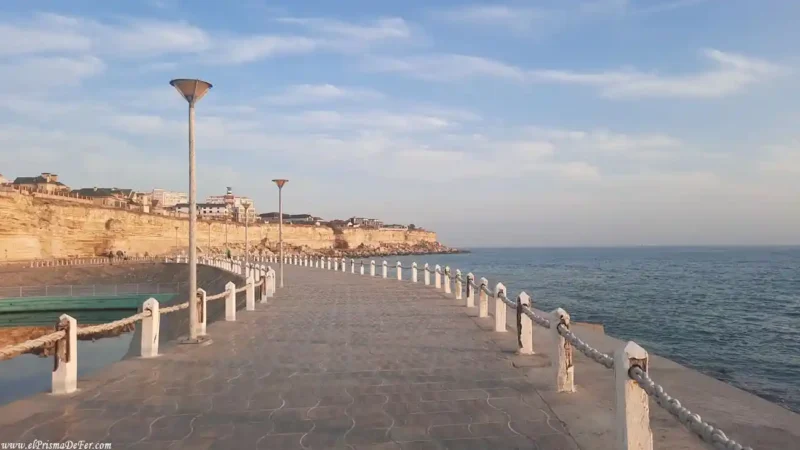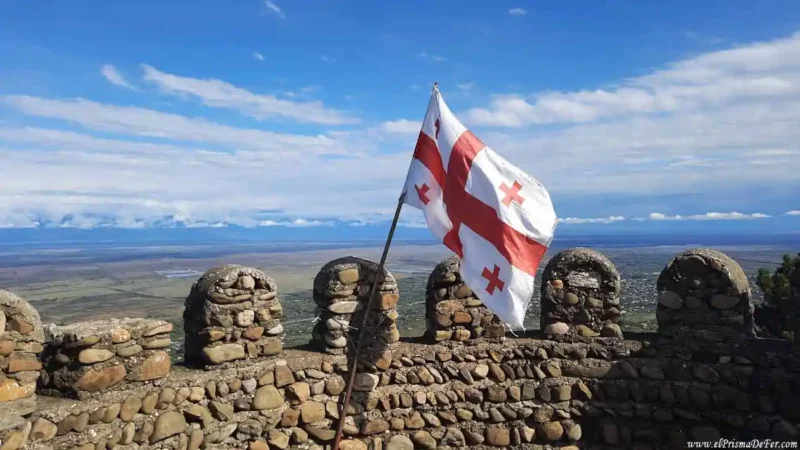Azerbaijan is a destination still off the radar for many travelers. Located between Europe and Asia, on the shores of the Caspian Sea, this country blends futuristic skyscrapers, like the modern Flame Towers that illuminate Baku, with rural villages that seem frozen in time.
Its culture reflects centuries of Persian, Turkish, Soviet, and Caucasian influences, making it a place as diverse as it is little known.
Furthermore, being a small country, all the attractions are within relatively short distances, allowing you to explore Azerbaijan in just a few days without missing out on variety.
In this guide you will find all the practical information for traveling to Azerbaijan: how to get around between cities, what places you can't miss, tips and transportation.
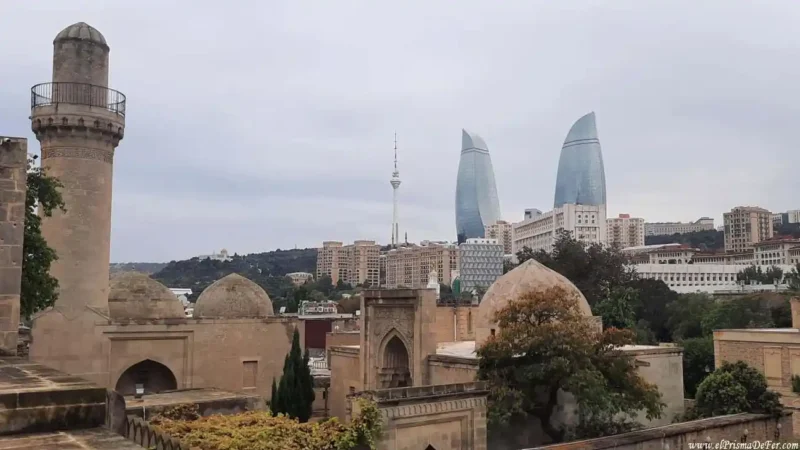
Table of Contents
What to know before traveling to Azerbaijan
| Language 🗣️ |
| The official language is Azerbaijani, although in tourist areas many speak Russian or some English, especially in Baku. |
| Currency 💵 |
| The official currency is the Azerbaijani manat (AZN). ATMs and currency exchange offices are readily available in Baku and other major cities. While credit cards are widely accepted, it's always advisable to carry some cash, especially if you plan to travel further afield. |
| Religion |
| The majority of the population practices Shia Islam, although the country is known for its secular and tolerant character. Religious practices are not as visible as in other Muslim countries, and there is a high degree of coexistence among different communities. |
Location  |
| Azerbaijan is located in the Caucasus region, on the border between Europe and Asia, sharing borders with Russia, Georgia, Iran, Armenia and the Caspian Sea to the east. |
| Capital 🏙️ |
| The capital is Baku, a modern city on the shores of the Caspian Sea, famous for its futuristic architecture, its waterfront promenade and its old town declared a World Heritage Site by UNESCO. |
| Visa 🛂 |
| To enter Azerbaijan, you need an electronic visa (eVisa), which is easily obtained online and is usually approved within a few days. It is important to have it before your trip, as it cannot be obtained upon arrival or by land. |

My visit to Azerbaijan was part of a grand journey along the ancient Silk Road. In this post you can learn more about the countries visited and how to do it all on your own.
Where is Azerbaijan located?
Azerbaijan is located in the South Caucasus, a mountainous region situated between Eastern Europe and Western Asia. It is bordered to the east by the Caspian Sea, to the north by Russia, to the northwest by Georgia, to the west by Armenia and to the south by Iran.
Its territory combines very varied landscapes: from the high mountains of the Caucasus to extensive semi-arid plains and coastal areas.

The perennial question of whether Azerbaijan is in Europe or Asia doesn't have a single answer. Geographically, most of the country is considered to be within Asia, although culturally and historically it shares strong ties with Europe.
That is why many describe it as a "bridge" country between both continents, a mix where East and West meet naturally.
A look at the history of Azerbaijan
The history of Azerbaijan is as complex as its geographical location. Situated at the crossroads of Europe, Asia, and the Middle East, this territory was for centuries a strategic point on the trade routes linking East and West, including the legendary Silk Road.
Its location made it a stage for Persian, Arab, Turkish, Mongolian, and Russian influences, each leaving its mark on the country's culture, architecture, and identity.
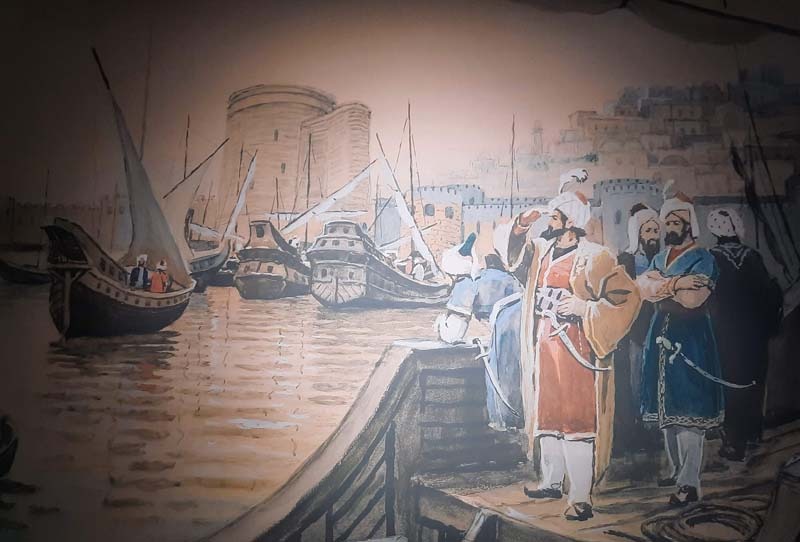
First kingdoms
The first kingdoms that inhabited the region, such as Caucasian Albania (not to be confused with present-day Albania), and later the Achaemenid and Sasanian Persian empires, laid the foundations for a rich cultural tradition.
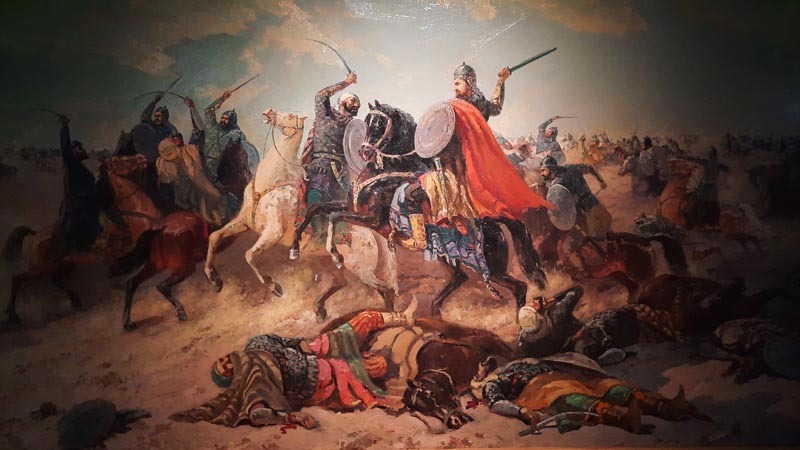
With the expansion of Islam in the 7th century, Azerbaijan adopted the Muslim religion, integrating into the Arab world and flourishing as an important center of learning and trade.
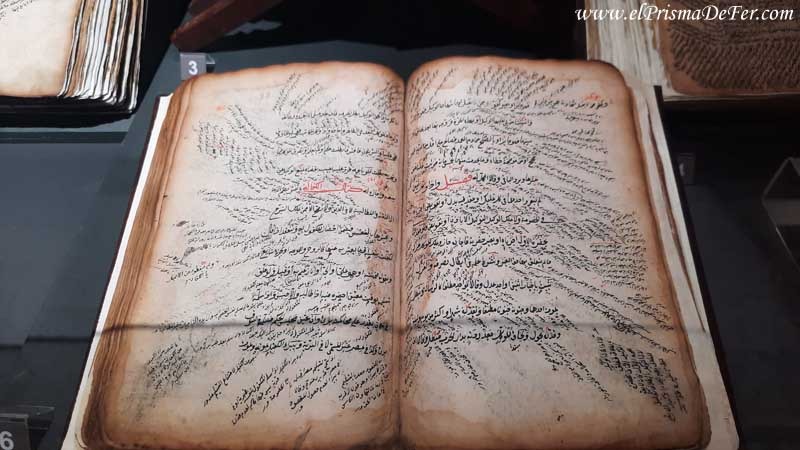
Middle Ages
During the Middle Ages, the region experienced periods of both splendor and tragedy. Cities like Shamakhi, which for centuries was one of the most prosperous cultural and commercial capitals of the Caucasus, were devastated by successive invasions.
One of the most remembered was the Mongol invasion of 1221, when Genghis Khan's troops ravaged Shamakhi, leaving thousands dead and deeply marking the country's collective memory.

Despite the destruction, the Azerbaijani spirit of reconstruction allowed the city to rise again and remain an important center of the region for centuries to come.
Over time, Azerbaijan fell under the influence of various powers: first the Timurids, then the Safavids of Persia, and later the Russian Empire, which annexed much of the territory at the beginning of the 19th century after the treaties of Gulistan (1813) and Turkmenchay (1828).

These agreements not only changed the borders, but also the ethnic and political balance of the entire South Caucasus.
Independence and annexation to the Soviet Union
In 1918, it proclaimed its independence as the first democratic republic in the Muslim world. However, this freedom was short-lived, as in 1920 it was incorporated into the Soviet Union, under which it remained for more than seven decades.

With the dissolution of the USSR, Azerbaijan regained its independence in 1991. Since then, the country has undergone a profound transformation: Baku became a modern and contrasting capital, driven by oil wealth, while the rest of the country retains ancestral traditions and a strong cultural identity.
The “genocide of 1918”, a memory still alive in Azerbaijan
When I visited the history museum in Baku, I was surprised to find so many references to the so-called “1918 genocide”. There are monuments, commemorative plaques, and a national day of remembrance (March 31).
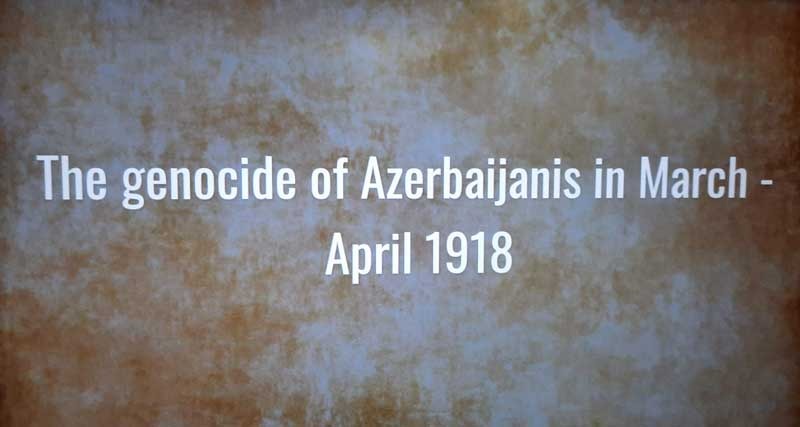
In the museum's galleries, photographs and documents bear witness to one of the most painful episodes in Azerbaijan's modern history. However, as is often the case in the Caucasus, behind the events lie different historical and political interpretations that are worth exploring to better understand the context.
According to the official Azerbaijani government version, in March and April of 1918, thousands of Azerbaijani civilians were massacred by Armenian militias and Bolshevik forces in Baku and other regions such as Shamakhi, Guba, and Karabakh. Reports indicate that villages were razed, mosques destroyed, and entire families killed or displaced.
For this reason, the country considers those events as a genocide specifically directed against the Azerbaijani population, and every year commemorates the “Day of the Genocide of Azerbaijanis”.
In Azerbaijan's historical narrative, these events are framed within a broader process that began after the treaties of Gulistan (1813) and Turkmenchay (1828), when the Russian Empire incorporated much of present-day Azerbaijani territory and, according to the local version, relocated Armenian communities from Persia there.
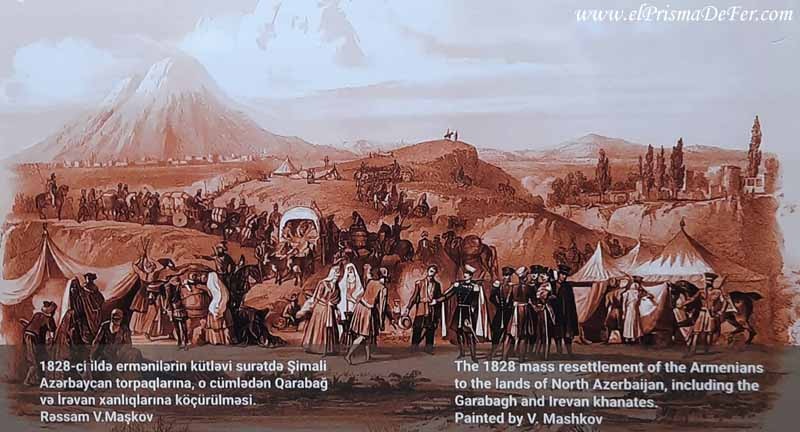
This demographic change, they claim, would have been one of the roots of the interethnic tensions that led to the events of 1918.
However, independent historians often have a different interpretation of this account. Many place the events within the chaos that followed the collapse of the Russian Empire: civil wars, power struggles, ethnic and religious tensions between Muslims and Christians, and the birth of new republics.
Some refer to these as interethnic massacres, rather than genocide in the legal sense. Victim figures also vary depending on the source, and there is no international academic consensus formally classifying them as genocide.
But beyond the terminology, the truth is that the memory of 1918 remains very present in Azerbaijan's national identity.
Want to know more?
I recommend these readings to gain a broader understanding of this topic, which I was completely unfamiliar with:
- Statement from the Ministry of Foreign Affairs of Azerbaijan on March 31 — Day of the Genocide of Azerbaijanis: mfa.gov.az
- Regarding the historical context of the events of 1918: Encyclopaedia Britannica – History of Azerbaijan
How to get to Azerbaijan
Currently, it is not possible to reach Azerbaijan by land from neighboring countries. The land borders with Georgia, Russia, Armenia, and Iran remain closed to foreign travelers, so air travel is the only available option.
The main gateway is the Heydar Aliyev International Airport, located in Baku, which receives direct flights from several European, Middle Eastern and Central Asian cities.
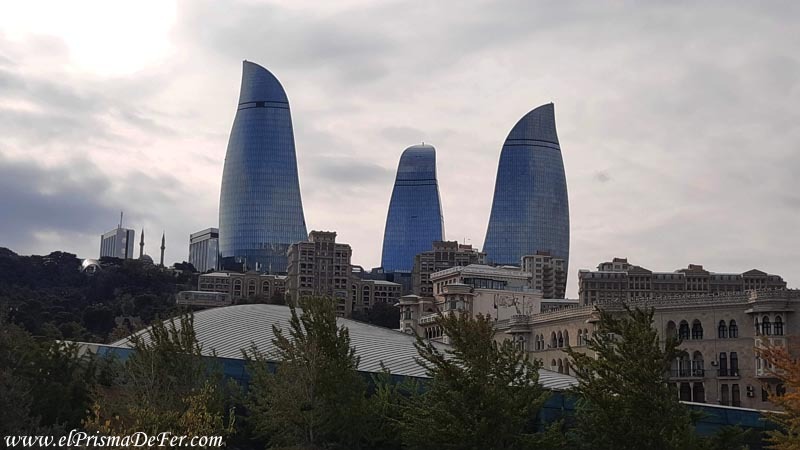
To enter the country it is mandatory to have an electronic visa (e-visa), which can be easily obtained through the official website of the Government of Azerbaijan. The process usually takes between 3 and 5 business days and allows a stay of up to 30 days. It is advisable to apply in advance and ensure that the entry date coincides with your flight.
In my case, I arrived from Aktau, Kazakhstan, on a short one-hour flight over the Caspian Sea. It's one of the most convenient routes for those traveling through Central Asia and looking to connect to the Caucasus without crossing long land borders.
How to get around Azerbaijan
Getting around Azerbaijan is relatively easy, especially if you're starting from Baku. The country has a network of trains and buses connecting the main cities and regions, although distances can be longer than they appear on a map.
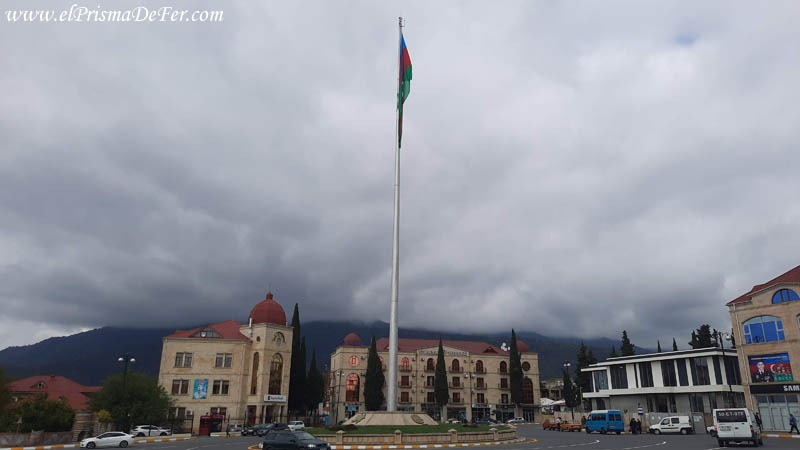
The train is a comfortable option for long journeys, such as Baku–Ganya, especially if you choose overnight services. Buses and marshrutkas (shared minibuses) are the most common and economical way to travel between towns and cities, with frequent departures from the main stations.
For those who prefer more freedom, renting a car is a good alternative, as the main roads are in good condition and traffic outside Baku is light. However, driving in rural or mountainous areas requires some experience.
Within Baku, the metro is efficient and inexpensive, complemented by taxis and ride-hailing apps like Bolt, which work very well. In smaller cities, getting around on foot or by taxi is usually sufficient.
Some interesting facts about Azerbaijan
- Azerbaijan is known as the “land of fire”, a nickname that comes from both its ancient fire worship and the natural gas deposits that have been burning continuously for centuries. One of the most impressive examples is Yanar Dag, a hill that is literally on fire 24 hours a day.
- Mud volcanoes: The country has almost half of all the mud volcanoes in the world. They can be visited in the Gobustan area, a short distance from Baku, where the landscape seems otherworldly.
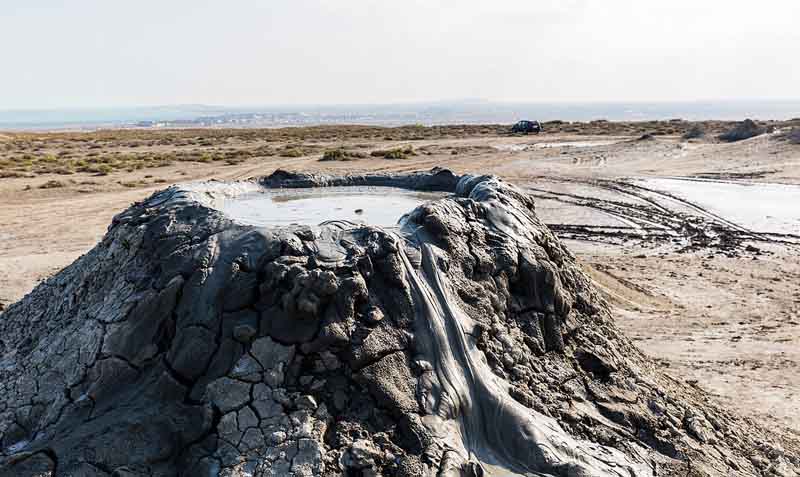
- In the capital is the Ateshgah Fire Temple, a Zoroastrian sanctuary where pilgrims worshipped the natural flames that sprang from the ground.

- Azerbaijan combines a moderate Muslim culture with customs heavily influenced by the Soviet era. It is common to see minarets and mosques alongside socialist-style sculptures or avenues lined with Art Deco architecture.

- The cuisine also holds surprises: dishes with pomegranate and stuffed vine leaves are national symbols, and black tea is served in pear-shaped glasses accompanied by homemade jams, a gesture of hospitality very typical of the country.
- The flag of Azerbaijan consists of three horizontal stripes: blue, red, and green. Blue represents the Turkic heritage, red symbolizes progress and the desire for modernization, and green refers to Islam. In the center is a white crescent moon and an eight-pointed star, alluding to both Islamic tradition and the eight main Turkic peoples.
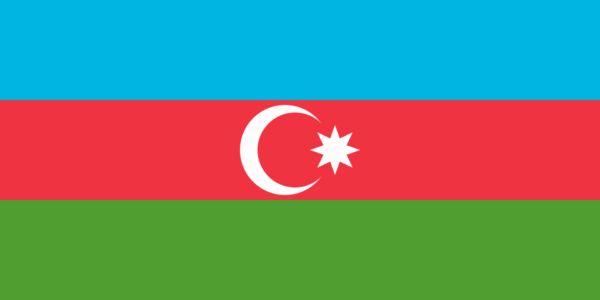
Places to visit in Azerbaijan
Azerbaijan combines natural landscapes with historic and modern cities. From futuristic Baku to the mountain villages of the Caucasus, each region offers a distinct facet of the country.
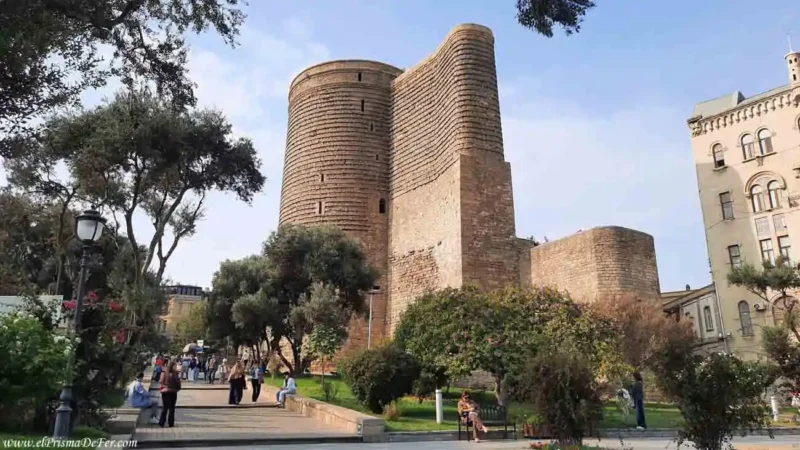
One week itinerary in Azerbaijan
Baku
Azerbaijan's capital is the ideal starting point for exploring the country. Its Old City (Icherisheher), declared a World Heritage Site by UNESCO, is full of cobbled alleyways, ancient walls and the famous Palace of the Shirvanshah.
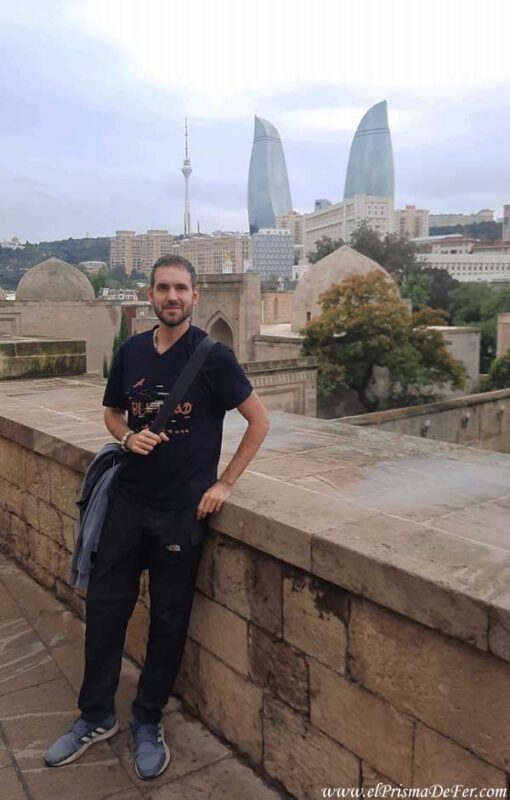
In contrast, the Caspian Boulevard Promenade and the imposing Flame Towers showcase Baku's more modern and cosmopolitan side.
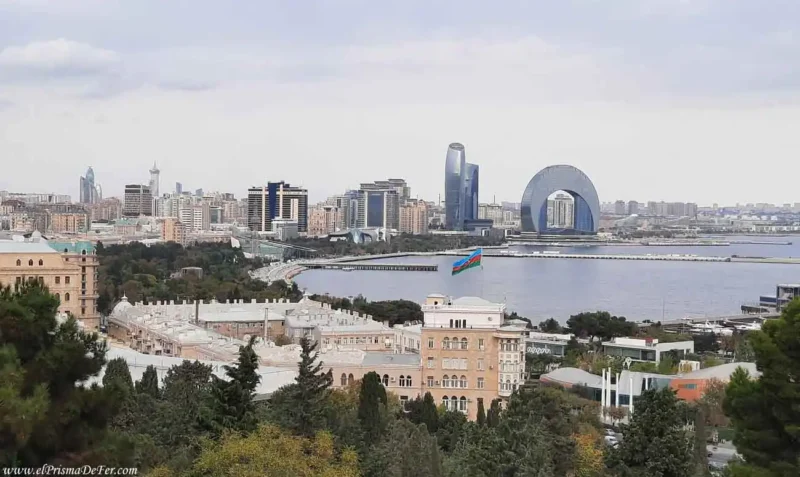
Things to do in Baku, Azerbaijan's European-style capital
Shaki
Located in the foothills of the Caucasus, Shaki is famous for its Khan's Palace, an architectural gem with colorful stained glass and delicate decorations.
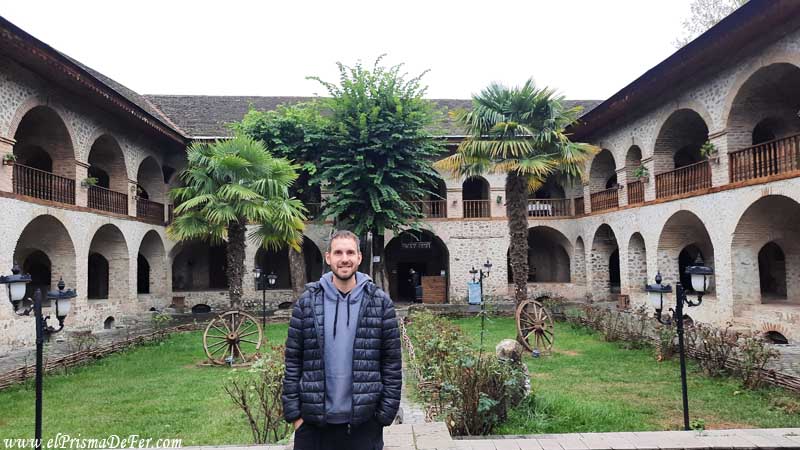
The historic center retains the charm of the old Silk Road, with caravanserais, bazaars and artisan workshops.

What to see in Shaki, the Azerbaijani city where the Silk Road feels most alive (coming soon)
Gobustan
About 70 km from the capital is the Gobustan National Park, known for its rock paintings that are over 10,000 years old and for the mud volcanoes that bubble continuously.

It is a unique place, where archaeology and surreal landscapes combine in an unmissable visit.
Quba and Khinaliq
In the north of the country, Quba is the gateway to the mountainous Caucasus. From there you can reach Khinaliq, one of the oldest and highest inhabited villages in the world.
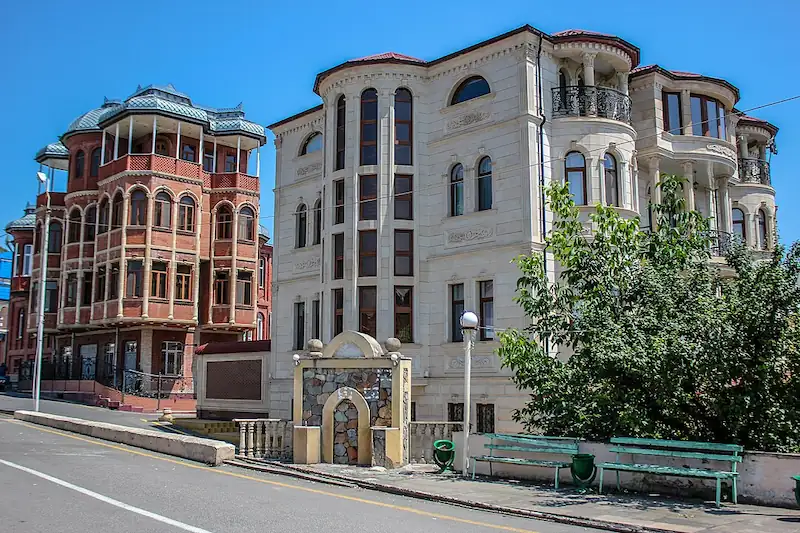
Its stone houses and natural surroundings offer an authentic glimpse into rural life in the mountains.
Zaqatala
Zaqatala, in the far northwest of the country, is a border region with a strong mountain identity and an interesting cultural mix due to its proximity to Georgia and Russia.
The city offers a large-town atmosphere with markets and cafes. Furthermore, the area surrounding Zaqatala includes forests, rivers, and small villages where rural life is maintained through agricultural and artisanal traditions.
It is an interesting alternative to extend a route through the north after visiting Quba or Sheki.
Ganya
The country's second-largest city combines history and art. Among its most interesting places are the Bottle House, the Nizami Ganjavi Mausoleum and Goygol Lake, one of the most beautiful in Azerbaijan.
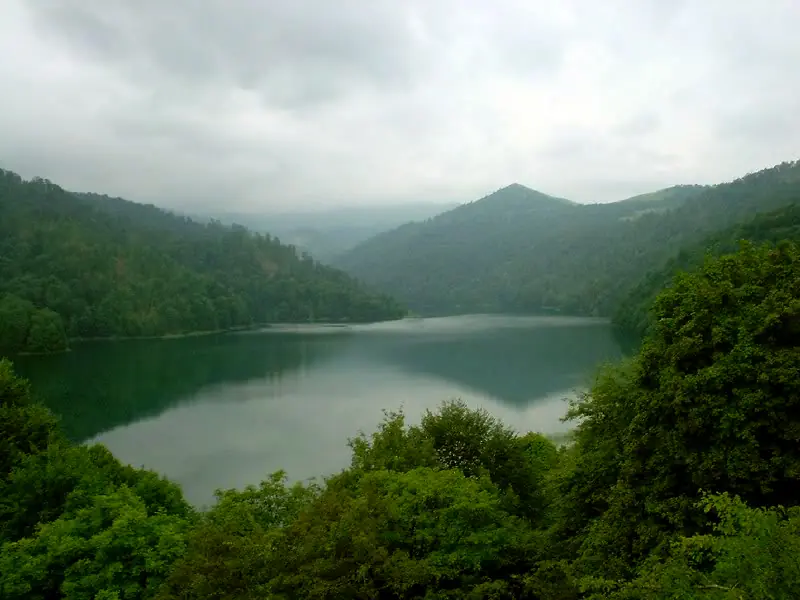
Naftalan
This small destination is famous for its medicinal oil, which has been used for centuries for therapeutic purposes.
Today, visitors can enjoy oil baths at the resorts in the area, a curious and unique experience in the world.
Activities organized in Azerbaijan
How to cross borders from Azerbaijan
Azerbaijan shares borders with Russia, Georgia, Iran, Armenia, and the Caspian Sea, but not all of them are open or accessible to travelers. It's important to plan your route carefully before continuing on to another country in the Caucasus.
The only land border currently open and practical for tourists is the one with Georgia, which connects cities like Baku with Tbilisi by train or bus. It's a simple, safe crossing, frequently used by travelers continuing their journey through the Caucasus.

What to see in Zaqatala, the last city before crossing to (coming soon)
The border with Armenia remains closed due to the conflict between the two countries, and it is not possible to cross directly. If you plan to visit Armenia, the most common option is to do so from Georgia.
The borders with Russia and Iran exist, but they are subject to stricter regulations and are not always open to foreigners, especially if you are traveling by land.
Finally, if you're coming to or planning to continue on to Central Asia, an interesting option is to fly from Baku to Aktau, Kazakhstan. It's a short flight, less than an hour, and one of the few ways to connect the Caucasus with Central Asia without traveling overland.
The conflict between Azerbaijan and Armenia over Nagorno-Karabakh
One of the most sensitive issues in the Caucasus region is the conflict between Azerbaijan and Armenia, mainly due to the dispute over the territory of Nagorno-Karabakh. This mountainous region, while officially part of Azerbaijan, was for a long time under the control of Armenian forces following the collapse of the Soviet Union.
In recent years, Azerbaijan has regained much of the lost territory, but tensions between the two countries remain. As a result of this conflict, the border between Azerbaijan and Armenia remains closed, and it is also recommended to avoid political discussions about the issue during your trip, as it is a very sensitive matter for the local population.
But there is good news. On August 8, 2025, a peace agreement between Armenia and Azerbaijan was announced following a summit in Washington. The historic agreement, which seeks to end nearly 40 years of conflict, includes the normalization of diplomatic relations, the reopening of trade and travel, and the establishment of a transport corridor through Armenia connecting Azerbaijan with its exclave of Nakhchivan.
In any case, beyond this, the country is safe for travelers, and most visitors are not affected by the situation.
Is it safe to travel to Azerbaijan?
Overall, Azerbaijan is a safe country for travelers. Crime rates are low, and local people are generally friendly and hospitable to visitors.
In cities like Baku, it's common to walk around the city center at night without major worries, and robberies are infrequent if you take the basic precautions you would apply in any other destination.
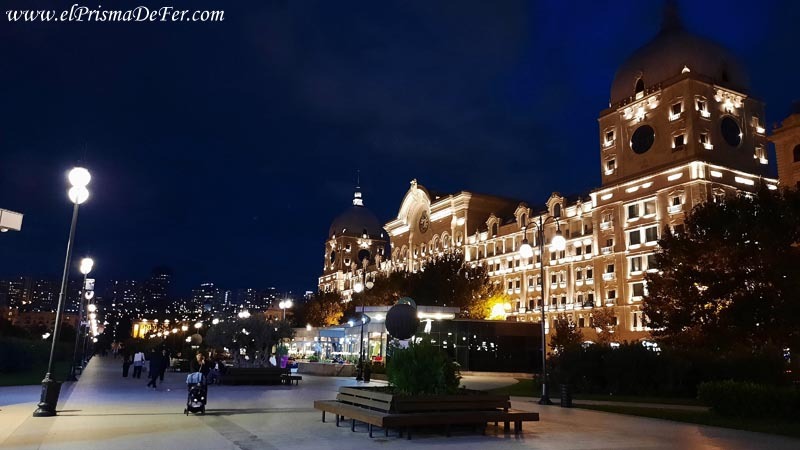
The main point to consider is the areas near the border with Armenia, where there may be a military presence or access restrictions due to the historical conflict between the two countries. However, these areas are far from the usual tourist routes, so they don't affect most travelers' itineraries.
It's also worth noting that, while the country is very modern and tolerant in many areas, society retains traditional values, especially outside of Baku. Dressing respectfully and avoiding public displays of affection helps maintain harmonious coexistence.
In summary, traveling in Azerbaijan is safe and comfortable, provided you exercise normal caution and respect local rules.
Best time to travel to Azerbaijan
The best time to visit Azerbaijan is during spring (April to June) and autumn (September and October), when the weather is mild and pleasant for exploring both Baku and the mountainous regions.
In summer, especially between July and August, temperatures can be very high in the capital and in the lowlands, while in winter cold and snow dominate much of the country, especially in the Caucasus.
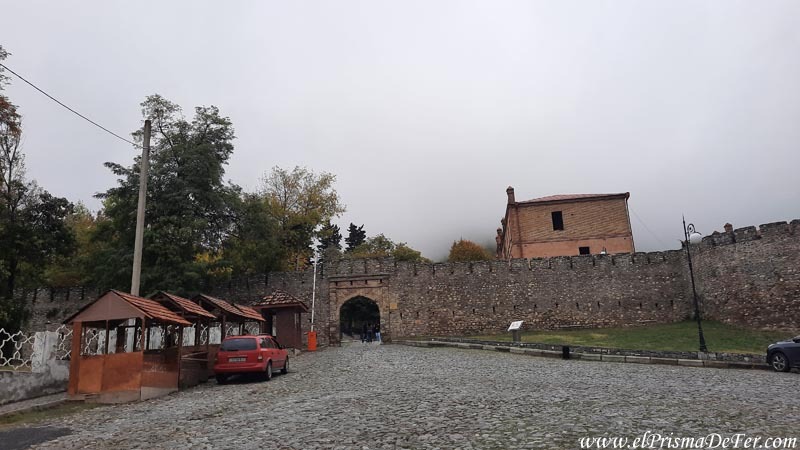
When I traveled in October, the first cold days and some rainy days were already beginning to be felt, especially in Baku, where the Caspian wind can make the perceived temperature even lower. Even so, it's a time with fewer tourists, ideal if you're looking for a quieter experience.
SIM card and internet connection in Azerbaijan
Getting a local SIM card in Azerbaijan is easy and inexpensive, ideal if you want to stay connected during your trip. The country's three main mobile companies are Azercell, Bakcell and Nar Mobile, all with good coverage in Baku and the main cities.
Azercell is usually the most recommended option by travelers because of its better coverage in rural areas and its stable 4G network.
You can buy the SIM directly at Baku Airport or at official stores within the city. You only need your passport to register it, as all lines must be linked to an identity document.
Data plans are quite cheap: for example, a few dollars can get you several gigabytes valid for a month.
In rural or mountainous areas, the connection can become unstable, but overall the country has good digital infrastructure, and in Baku most cafes and accommodations offer free Wi-Fi.
Which eSIM to use in Azerbaijan
If you don't want the hassle of finding a traditional SIM card as soon as you arrive in Azerbaijan, an excellent alternative is to use an eSIM. With this system you can activate mobile data from your cell phone before traveling, without needing to go to any store or change the physical card.
For those planning to travel around the country, I recommend using Airalo, as it offers cheaper plans than other companies and has coverage throughout Azerbaijan, even in less touristy areas.
Additionally, if you buy your eSim through my link you can access a 15% discount if it's your first purchase (Code: NEWTOAIRALO15), or 10% if you've used the platform before (Code: AIRALOESIM10).
If you want to better understand how eSIMs work, their advantages, how to check if your phone is compatible and how to use the codes, I invite you to read the full post I wrote on the topic.
How long to stay in Azerbaijan
The ideal number of days to travel around Azerbaijan depends on the type of trip you are looking for, but in general between 7 and 10 days is a good starting point to see the most important sights without rushing.
With a week you can dedicate a few days to exploring Baku, its old town, the waterfront and the surrounding areas such as Gobustan or the Qobustan mountains.
If you have more time, it is worth extending the itinerary north, visiting Lahij, Sheki or Quba, where you can appreciate rural life and the mountainous landscapes of the Caucasus.
If your idea is to travel at a relaxed pace and connect the country with Georgia or Kazakhstan, you can plan a stay of 10 to 14 days, which will allow you to enjoy both the modern part of the country and its more traditional regions.
In short, a week is enough for a first impression, but Azerbaijan has much more to discover if you decide to stay a few extra days.
Support The Prism of Fer!
Your support helps me continue creating free content on the blog. Thank you so much!



